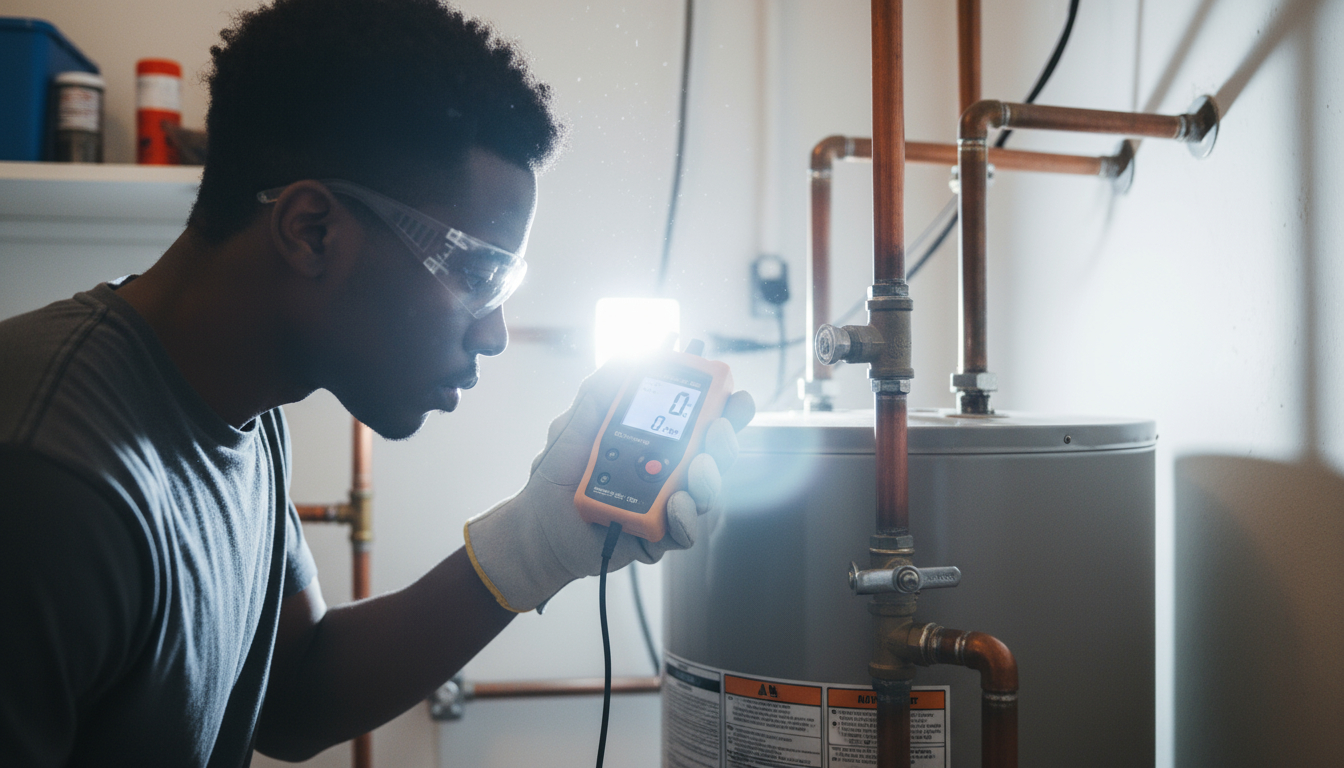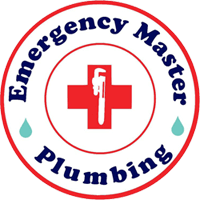

Carbon monoxide (CO) is a silent killer that claims hundreds of lives each year in the United States. This odorless, colorless gas can seep into your home from faulty appliances, vehicles, or blocked vents, leading to poisoning before you even realize the danger. If you’re wondering how to detect carbon monoxide leaks in your home, understanding the risks and signs is crucial. This guide breaks down everything you need to know, from symptoms of exposure to practical detection steps and prevention tips. By the end, you’ll feel empowered to protect your family and create a safer living space.
As a homeowner in Arizona’s unique climate—where dry air and heavy HVAC use can exacerbate issues—staying vigilant is especially important. Let’s dive into the essentials.
What Is Carbon Monoxide and Why Does It Pose a Threat?
Carbon monoxide forms when fuels like gas, oil, wood, or charcoal burn incompletely. Common household sources include gas furnaces, water heaters, fireplaces, stoves, and even idling cars in attached garages. In Arizona homes, where monsoon seasons can clog chimneys or vents with debris, these risks amplify.
The problem arises because CO binds to hemoglobin in your blood more effectively than oxygen, starving your body of the vital gas it needs. Even low-level exposure over time can cause long-term health issues like headaches or memory loss. High concentrations lead to severe poisoning, with symptoms mimicking the flu: dizziness, nausea, confusion, and chest pain. Vulnerable groups, such as children, the elderly, and those with respiratory conditions, face greater dangers.
According to safety experts, over 400 accidental CO poisoning deaths occur annually in the U.S., with thousands more hospitalized. Detecting leaks early prevents tragedy. If you’ve noticed unusual fatigue or flu-like symptoms without a fever, especially in winter when heating systems run harder, it could signal a CO issue.
Common Sources of CO Leaks in Arizona Homes
Arizona’s hot summers and mild winters mean reliance on air conditioning and occasional heating, but neglected maintenance can create hazards:
- Faulty HVAC Systems: Clogged filters or cracked heat exchangers in furnaces release CO.
- Water Heaters and Dryers: Gas models without proper venting.
- Chimneys and Vents: Debris from dust storms blocks airflow.
- Portable Generators: Often used during power outages but placed too close to homes.
Inspect these annually to avoid buildup. Problem-solving starts with awareness—regular checks turn potential disasters into minor fixes.
Recognizing the Symptoms of Carbon Monoxide Poisoning
One of the biggest challenges in detecting carbon monoxide leaks is the gas’s stealthy nature. Unlike smoke or natural gas, CO has no smell or visible signs, making symptoms your first clue. Exposure levels determine severity:
- Low-Level Exposure (Mild Symptoms): Persistent headaches, tiredness, and mild nausea. You might dismiss these as stress or allergies, but if multiple household members experience them simultaneously, suspect CO.
- Medium Exposure: Shortness of breath, dizziness, and confusion. Vision blurs, and coordination falters—drivers have reported near-accidents from this.
- High Exposure (Emergency): Vomiting, loss of consciousness, seizures, or cherry-red skin (a late sign). At this stage, immediate medical help is essential.
In Arizona, where indoor air quality can suffer from poor ventilation during heatwaves, these symptoms might overlap with dehydration or heat exhaustion. Track patterns: Do they worsen near appliances? Improve when you’re away from home? Journaling symptoms helps diagnose the problem.
Pets and plants can signal issues too—watch for lethargy in dogs or wilting houseplants near suspected sources. If poisoning is suspected, evacuate immediately, call 911, and seek fresh air. Blood tests at the hospital confirm CO levels, solving the mystery and guiding treatment with oxygen therapy.
Essential Tools: How to Use CO Detectors Effectively
The most reliable way to detect carbon monoxide leaks in your home is with detectors. These devices sound alarms at dangerous levels, giving you time to act. Not all smoke detectors include CO sensing, so invest in dedicated units.
Types of Carbon Monoxide Detectors
Choose based on your home’s needs:
- Plug-In Detectors: Affordable and easy to install near outlets. Ideal for kitchens or living rooms.
- Battery-Operated: Portable for garages or basements. Replace batteries twice a year.
- Smart Detectors: Connect to apps for remote alerts and integration with home systems. Great for tech-savvy Arizona families monitoring via phone during vacations.
- Combination Units: Smoke and CO in one, saving space but ensuring UL certification for accuracy.
Look for models certified by Underwriters Laboratories (UL) or the Consumer Product Safety Commission (CPSC). Prices range from $20 to $100, making them a small investment for peace of mind.
Optimal Placement for CO Detectors
Placement is key to early detection. Follow these guidelines:
- Install one on every level, including basements and attics.
- Place near sleeping areas—within 15 feet of bedrooms.
- Avoid corners, vents, or humid areas like bathrooms to prevent false alarms.
- In Arizona homes with open floor plans, position near HVAC returns for broad coverage.
Test monthly by pressing the button; a chirp means replace the unit (they last 5-7 years). If an alarm sounds, evacuate, ventilate, and call professionals. This systematic approach solves the detection puzzle before it escalates.
Step-by-Step Guide to Detecting and Testing for CO Leaks
Beyond detectors, proactive testing uncovers hidden leaks. Follow this problem-solving process:
- Visual Inspection: Check appliances for soot, rust, or yellow flames (blue is normal for gas). Look for vent blockages outside your home.
- Smell for Secondary Clues: While CO is odorless, related issues like burning oil might alert you.
- Use a CO Meter: Handheld devices measure parts per million (ppm). Safe levels are under 9 ppm over 8 hours; alarms trigger at 70 ppm.
- Professional Inspection: Hire certified technicians for combustion analysis on furnaces or chimneys. In Arizona, where hard water affects water heaters, annual servicing prevents corrosion-induced leaks.
- Monitor with Logs: Note detector readings and symptoms over weeks to spot trends.
If tests show elevated CO, shut off sources and ventilate. This methodical detection ensures safety without guesswork.
When to Call in Experts
DIY checks help, but pros use advanced tools like flue gas analyzers. Signs warranting immediate help include frequent alarms, visible damage, or post-storm concerns. Delaying can lead to costly health bills—prevention saves lives and money.
Preventing Carbon Monoxide Leaks: Long-Term Solutions
Detection is reactive; prevention is proactive. Address root causes to minimize risks:
- Schedule Annual Maintenance: Clean and tune HVAC systems, chimneys, and vents. Arizona’s dust requires more frequent filter changes.
- Install Proper Ventilation: Ensure exhaust fans vent outdoors, not into attics.
- Upgrade Old Appliances: Replace units over 15 years old with efficient, CO-safe models.
- Safe Generator Use: Keep portables 20 feet from windows with exhaust directed away.
- Educate Your Household: Teach family about alarms and evacuation plans.
Incorporate smart home tech for automated shutoffs. These steps solve ongoing problems, creating a CO-free environment.
Arizona-Specific Prevention Tips
Our desert climate brings unique challenges: Monsoon debris clogs flues, while summer AC use strains systems. Opt for drought-resistant vent covers and schedule pre-monsoon inspections. Local codes may require CO detectors in new builds—check yours for compliance.
The Hidden Costs of Ignoring CO Leaks
Beyond health risks, undetected leaks lead to property damage. CO can corrode pipes or force emergency repairs costing thousands. One Arizona family faced $5,000 in furnace replacement after a leak went unnoticed. Early detection via the methods above averts these expenses, solving financial worries alongside safety ones.
In summary, how to detect carbon monoxide leaks in your home involves awareness, tools, and action. From symptoms to detectors and pros, these strategies empower you. Stay safe—your home should nurture, not endanger.
For expert help detecting or preventing CO leaks in Arizona, contact Emergency Master Plumbing & Air at 623-584-4706. Our certified technicians provide thorough inspections and repairs to keep your home secure year-round.
